How to Improve the Accuracy of the Weighing System?
A weighing system utilizes scales & other measurement devices to help perform an operation. Weighing systems are used in many applications, including automation, quality control, data collection & more. These systems help increase efficiency, decrease deviation from a set standard, and can even make data management effortless. Do you know how to make sure your weighing system gives accurate weight? ATO will go over five factors that can affect the weighing system's accuracy and advises selecting, installing, and operating the system to handle these factors.
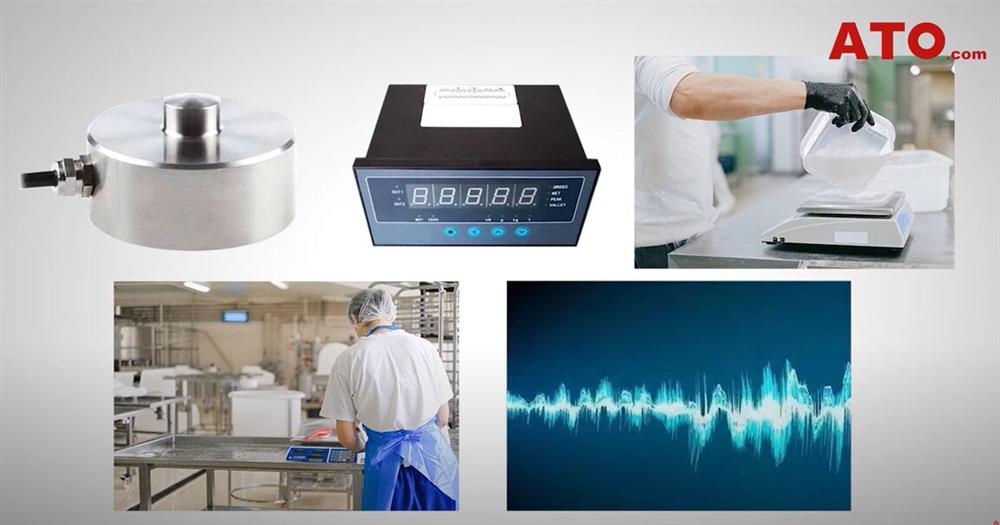
Load cell accuracy
Selecting a top-quality load cell for your weighing system is the first step in obtaining weighing accuracy. The key specifications for a load cell that will provide accurate weight information are as follows.
- Understanding the specifications: Although every specification won't necessarily apply to your weighing system installation, it's important to understand each specification to determine the load cell's combined accuracy. Major specifications to be considered include Non-linearity, Hysteresis, Non-repeatability and Creep, etc.
- Considering Temperature changes: Temperature changes can cause weighing errors. Most load cells are temperature-compensated to reduce these errors. But if your weighing system is subject to large temperature changes during the weighing cycle, consider how temperature can affect the load cell output. If the only significant change affecting your weighing system is between summer and winter temperatures, you can recalibrate the load cells once when the season changes to correct for any temperature-caused errors.
- Considering your load cell’s response time: The load cell's response time is another factor to consider for some applications. The typical load cell behaves like a stiff spring that oscillates, so to achieve an accurate weight reading, the load cell must settle - that is, stop oscillating - in less time than the required weighing period.
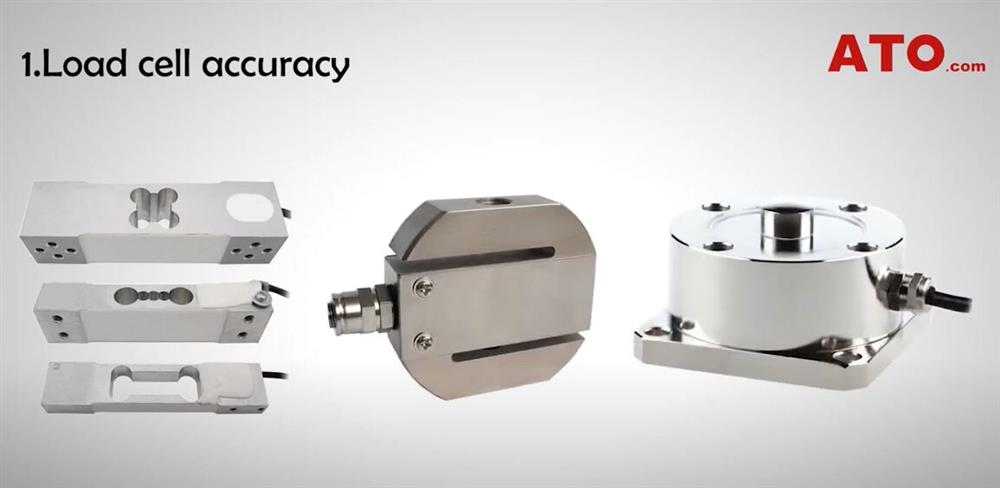
Load factors
- Ensure that the load is applied to each load cell in your weighing system as specified by the manufacturer.
- An improperly applied load, such as a twisting load, causes the strain gauges in the cell to experience strain and send a signal change proportional to the twisting rather than the load's weight.
- Correctly align each load point assembly - that is, each load cell and its mounting hardware - to ensure that the mounting hardware channels the load directly through the load cell. For example, for compression-mounting load cells under a hopper, align each load point assembly directly under the hopper leg to avoid pulling or pushing between assemblies on the other legs.
- Each load cell should be level, and all should be on the same plane to ensure that they share the load equally.
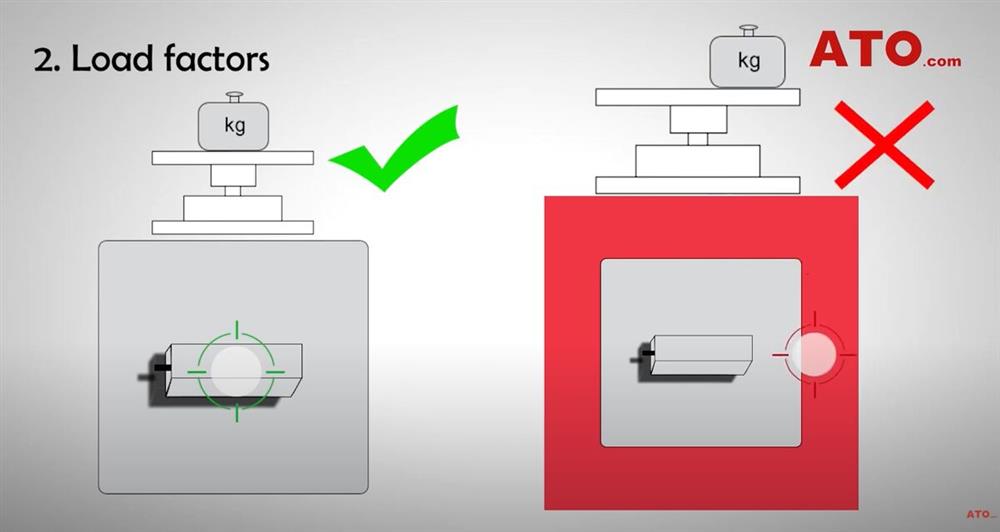
Environmental forces
Ensure that only the weight force is transmitted to each load cell. Other forces, including environmental forces such as wind loading, shock loading, vibration, large temperature changes, and pressure differentials, can produce errors in the load cell signal.
- Wind loading: Wind loading can affect an outdoor weighing system or a low-capacity indoor system. In such a case use higher-capacity load cells to prevent overloading the load cells. Indoors, an active overhead air conditioning vent can also create inaccurate small-increment (such as 1-ounce) measurements on a low-capacity weighing system, such as a small platform scale. You can use a Plexiglas cover over the platform scale to block or divert stray air currents. For accurate weighing, the load cells alone must support all the weight to be measured.
- Shock loading: Shock loading occurs when a heavy material is dumped onto a weighing system, causing forces greater than the system's rated capacity and damaging the system. You can use higher-capacity load cells that can handle this shock loading, but this will degrade the system’s resolution (the smallest increment that the system can weigh). Controlling the material flow onto the weighing system with a feeder, specially designed loading chute, or other devices can prevent shock-loading damage.
- Vibration: Vibration from process equipment and other sources near the weighing system can cause the load cells to measure the weight of the material as well as a vibration that's transmitted to them, which the cells sense as mechanical noise. You can reduce or prevent vibration effects by isolating the weighing system from vibration sources when possible or using weighing system instrumentation with algorithms that remove vibration effects.
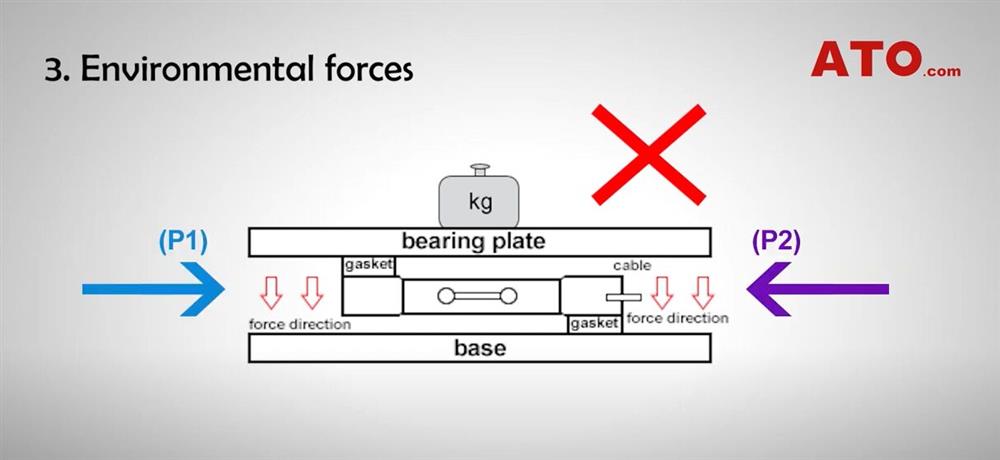
Interference with signal transmission
In addition to ensuring that the load cells measure only the desired weight, it's equally important to ensure that the weight controller measures only the load cell electrical signal. Radiofrequency interference (RFI), electromechanical interference (EMI), moisture, and temperature can all interfere with this electrical signal.
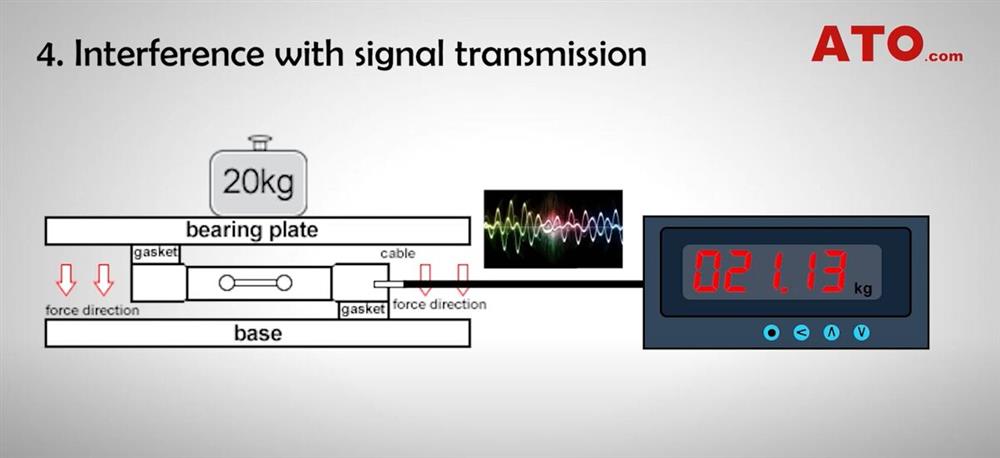
Instrumentation and control
Following the advice in the previous four sections will ensure that your load cell signal arrives at the weight controller in the cleanest form possible. But chances are, the signal still won’t be absolutely clean. Similarly, the weight controller measures an electrical signal, and RFI and EMI are electrical signals. But even if you can't entirely eliminate mechanical and electrical noise sources, you can select a weight controller that helps clean up less-than-perfect weight signals and improves weighing accuracy.
Three key specifications to ensure the accuracy of the weighing system
- The load cell or weight controller to be selected has accuracy 10 times better than your desired system accuracy.
- Be careful about installation and operation.
- Find a trusty sensor manufacturer.
The following video introduces more details of the factors that affect the accuracy of the weighing system, if you want to see more videos, please click the video below.

